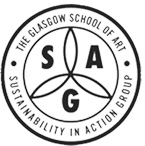MICHAEL BARR: Glasgow School of Art Residency, 2014
According to Seamus Heaney’s version of the Buile Suibhne, Sweeney – having got into a spot of bother, and been turned, naked, into something between man and bird – lived a life in fear of human contact. His avian roamings took him all over Ireland. He flew to various parts of the British Isles as well, and spent six weeks living ‘in a cave that belonged to Donnan on the island of Eig off the west of Scotland’.
Heaney’s text suggests that, during those mad, flighty wanderings, Sweeney supped on the following: watercress; brooklime; sorrels; wood-sorrels; berries; wild strawberries; blackberries; raspberries; wild garlic; black sloes; dark sloes; sharp-tasting sloes; nuts; hazelnuts; oyster-grass; apples. This list is not exhaustive, but these were the morsels which I thought might be edible by those of us, more human than bird.
My research whilst on the island was to focus on the mapping of two things: caves, and the growth of these foodstuffs.
* * *
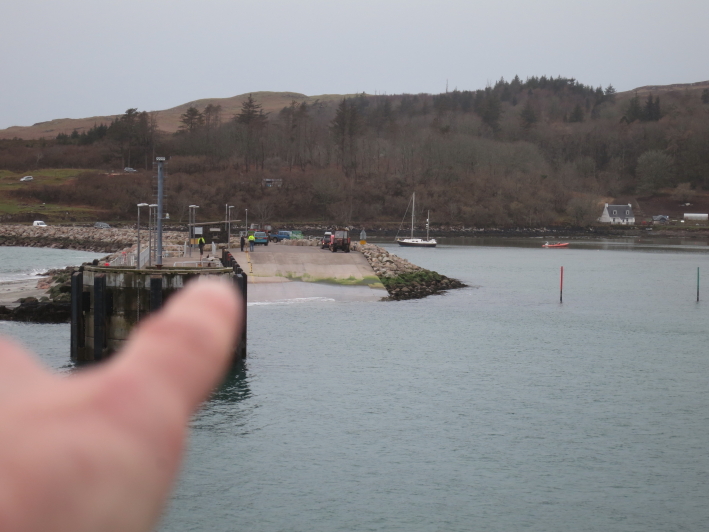
(I was delayed in getting over to Eigg for a couple of days – the ferry was twice cancelled due to bad weather. When I finally approached the island, I guided the boat to the pier, just to be on the safe side.)
* * *
Once I got to the island, the first strand of my research saw me walking to several of the caves which dot the island’s coastline.
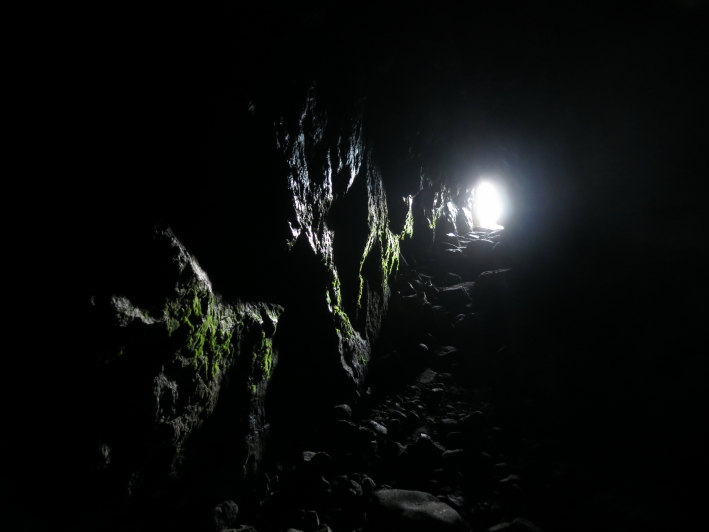
Some caves were quite easily accessible – such as Massacre and Cathedral caves at the south of the island – and have very particular histories. Cathedral cave was used as a place of worship, and Massacre cave was the sixteenth century site of the death of nearly four hundred islanders at the hands of the MacLeods. One of today’s islanders theorised that the latter would have been the cave for Sweeney, though he’d have been long gone (almost a thousand years long) by the time of the massacre.
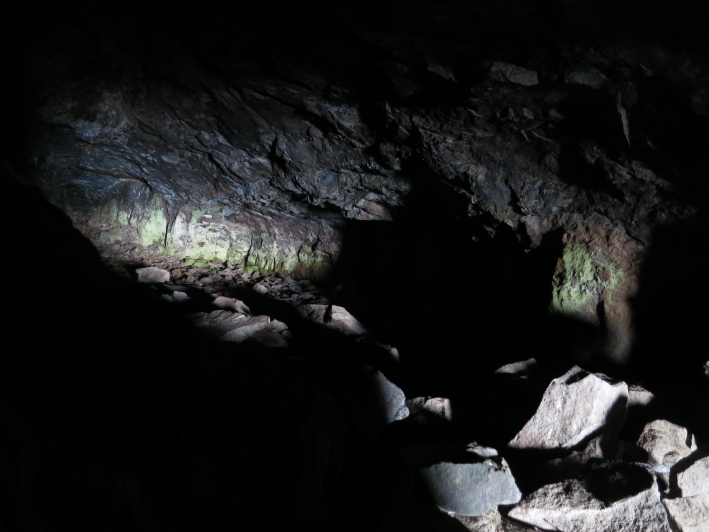
The two caves pictured above are big, but some were much smaller, such as this one at Laig:
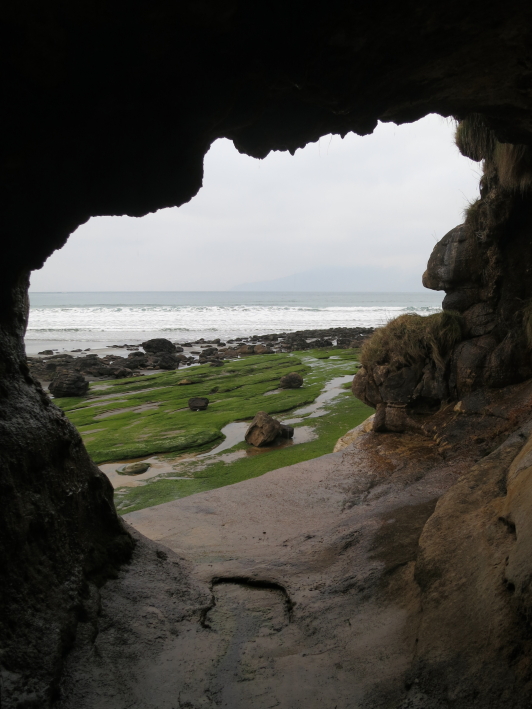
Others were more difficult to get to, such as the one pictured next, below the ruined settlement at Grulin. In his book, Soil and Soul: People Versus Corporate Power, Alastair McIntosh speculates that this is the cave that Sweeney would have inhabited.
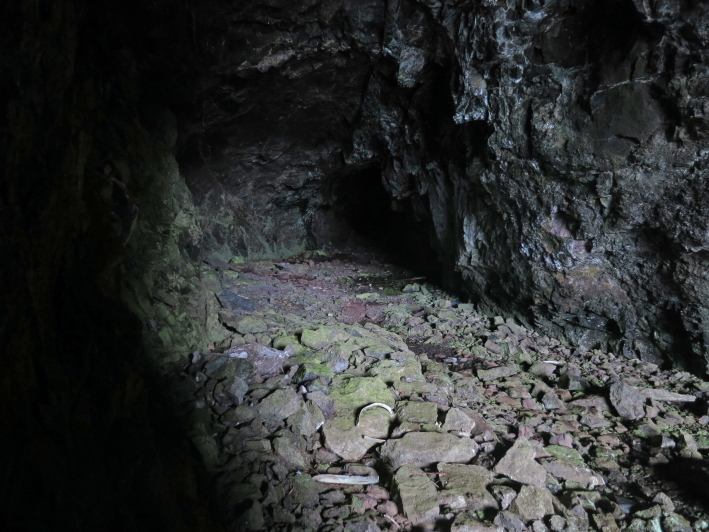
And some may not have existed at all. One of the islanders told me about a cave beyond Grulin. He knows much more about these things than me, but I couldn’t find it. It may be somewhere in the following image. It was a lovely walk, anyway.
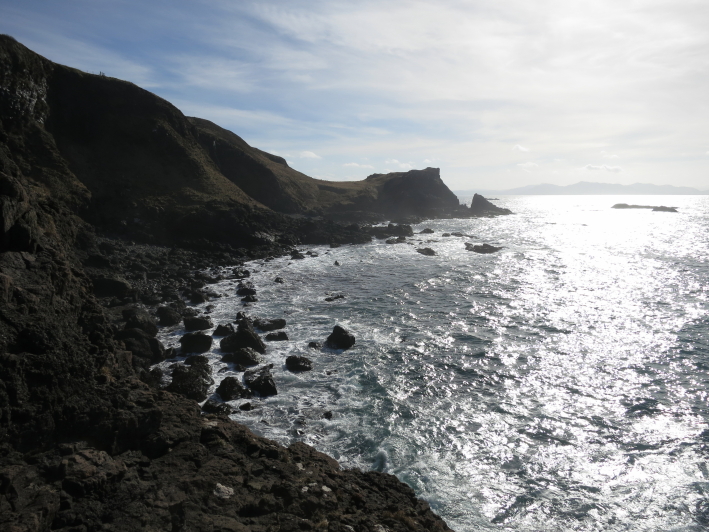
* * *
Whilst I didn’t always find what I was looking for on my walks, I did find other things. Instead of the cave beyond Grulin, I found this:
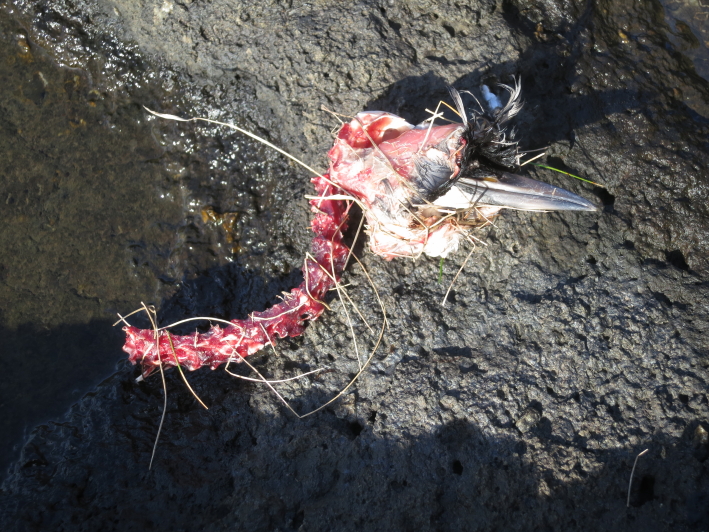
I had various other avian encounters as well.
Whilst I don’t know what type of bird emitted this call, I do know who on the island will be able to identify it when I go back.
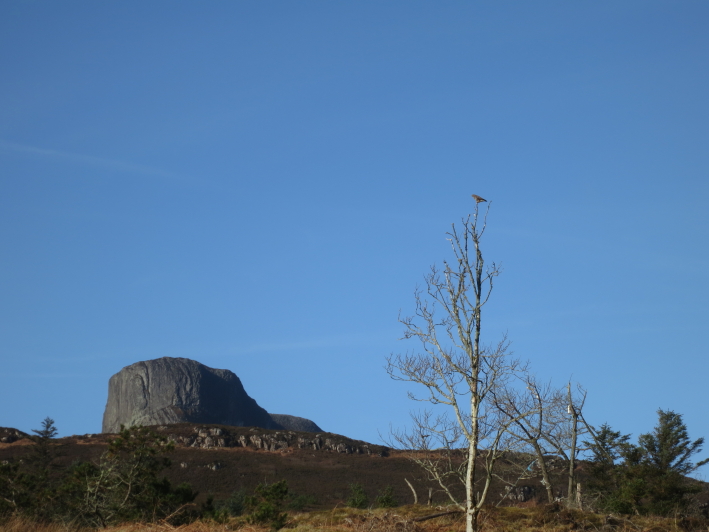
Birds in trees made me think of Sweeney.
And I found myself reading from Heaney’s text, whilst perching, wobblingly, in the buff/in a bush.
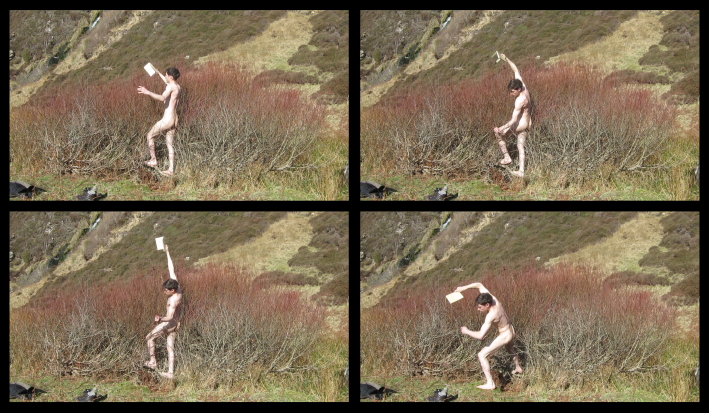
* * *
The second strand of my research involved talking to various islanders about foraging. With their knowledge, I built up a picture of where the aforementioned foodstuffs grow when in season. At the moment, this picture looks like a map:
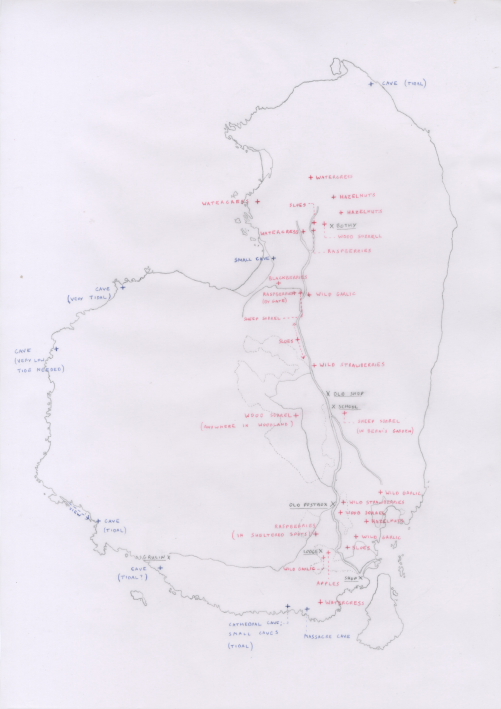
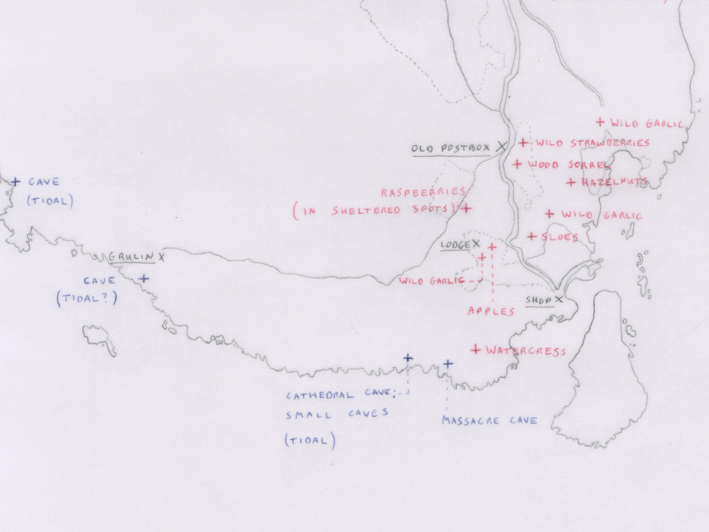
* * *
All of this was done with the help of quite a lot of people on the island. That help came in different forms, and it came from the following: Eddie; Lucy; Brian; Camille; John; Dan; Brendan; Mairi; Berni; Dean; Phil; Alan; Bob; Jamie.
I think that these people are important to acknowledge.
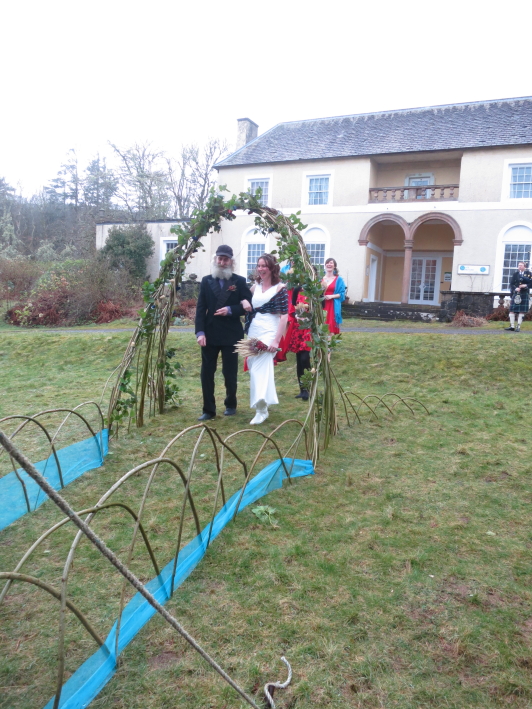
Whilst I don’t necessarily see my work on Eigg as a social engagement project, I do think about socially engaged art quite a lot. It was nice to be welcomed at Tash and Gabe’s wedding on my final day on Eigg. That was a very social engagement.
The bothy itself was a wonderful place in which to be on my own, but the community within which it is situated offers a very particular set of possibilities to those who like to work with people. Given what I knew of the island before my arrival – its size, for example, and the circumstances of its ownership – I had imagined that ‘community’ would be a meaningful, vital and important thing there. I’m under no illusion that Eigg is a place devoid of social friction, but during my short stay, the willingness and the ability of islanders to engage productively with me in my work was notable. That ability came through their engagement with the landscape that they inhabit, through their engagement with the people with whom they share that landscape, and through their happiness in sharing the knowledge which arises from these engagements. Mapping the growth of wild foodstuffs, for example, became easy, because everyone whom I asked about it either knew where things grew, or knew whom I should ask.
The research that I carried out on Eigg will hopefully allow me to return to the island in the summer, to realise a happening of some sort involving food, caves, text and people. With luck, I’ll update this blog post once that has happened.
Michael Barr, Glasgow, March 2014
This residency was supported by GSA Exhibitions and GSA Sustainability in Action Group

